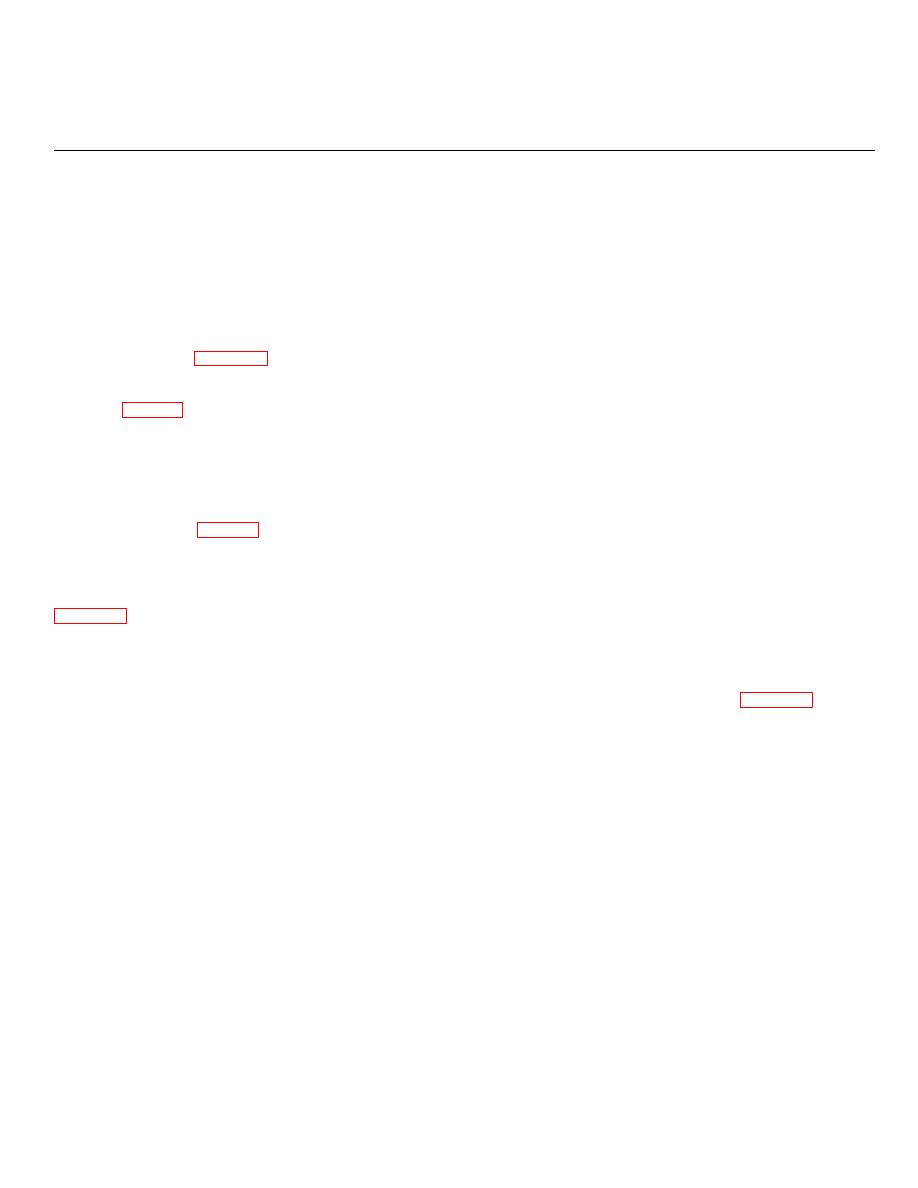 |
|||
|
|
|||
|
Page Title:
CHAPTER 9 TESTING OPTICAL PROPERTIES OF INSTRUMENTS |
|
||
| ||||||||||
|
|
 TM 9-258
CHAPTER 9
TESTING OPTICAL PROPERTIES OF INSTRUMENTS
known. It can be determined by measuring the focal
9-1. General. This chapter describes a number of
lengths of the elements. The magnifying power can be
relatively simple procedures by means of which the
approximately determined by this method: Mark a
properties and qualities of complete instruments may be
number of connected squares of equal size in a line on a
measured or calculated. For the most part, the tests can
distant white wall. Observe the squares with the right
be made without special equipment. Laboratory test
eye looking through the instrument and with the left eye
methods are purposely avoided.
looking at them naturally. The right eye will receive a
9-2. Objective Aperture. The objective aperture size is
magnified impression of one or two of the squares; the
limited by the clear area provided by the mount of the
left eye will receive a natural impression of a number of
objective. It can be measured in millimeters or decimal
them. The two impressions will be fused by the brain
parts or fractions of an inch with a scale, rule, or with a
into a single impression of a large square with a number
Ramsden dynameter (para 5-24).
of smaller ones crossing it in a line. If four natural
9-3. Measurement of Exit Pupil and Eye Distance.
squares are seen inside the magnified square, the
Direct the instrument at an illuminated area. Focus the
instrument has a magnification of approximately 4
exit pupil (fig 2-54) on translucent paper or ground glass.
diameters or 4 power.
To focus the exit pupil, move the paper or glass towards
9-5. Measurement of Field of View.
or away from the eyepiece until the exit pupil is seen in
a. The field of view (FOV) of an instrument may be
its smallest diameter as a sharp circular shape of even
expressed in either angular or linear measure. The
brightness. Measure the distance of the face of the
angular measure is more commonly given and is
paper or glass from the rear surface of the eyepiece lens
expressed in degrees and minutes. The linear measure
with a scale graduated in millimeters or decimals or
is expressed in meters at ranges of 100 meters or 1,000
fractions of an inch (fig 2-55). Mark the opposite edges
meters.
of the exit pupil on the paper or glass and measure its
b. To determine angular FOV, place the telescope
diameter in millimeters or decimals or fractions of an
in a fixture or mount which is provided with an azimuth
inch. The position and diameter of the exit pupil can be
scale, a micrometer, and levels. Level the instrument
measured exactly by means of a Ramsden dynameter
and direct the telescope so that a convenient vertical
object is at the left edge of the FOV. Read the scale and
9-4. Magnifying Power.
micrometer. Traverse the instrument until the object is at
a. Definition. The magnifying power of an optical
the right edge of the FOV. Again read the scale and
instrument is the ratio of the heights of the retinal images
micrometer. The difference between the two readings is
produced in the observer's eye with and without the
the angular measure of the true FOV (para 5-25). If the
instrument.
scale and micrometer are graduated in mils, convert to
b. Calculation. The magnifying power of an optical
degrees and minutes.
instrument depends upon the relation between the focal
c. To measure the linear FOV, place two stakes at
length of the objective and the focal length of the lenses
a specified distance from the instrument; one at each
of the eyepiece, the latter being considered as a single
edge of the observed FOV. Measure the actual distance
lens. The magnifying power of a telescope equals to the
between the two stakes. The linear FOV may be
focal length of the objective divided by the focal length of
determined mathematically by the formula: 2 x tangent
the eyepiece. For example, if the objective has an
of one-half the angular FOV x the range of the stakes.
equivalent focal length of 8 inches and the eyepiece has
9-6. Determination of Spherical Aberration. Cut a
an equivalent focal length of 1 inch, the instrument will
mask of black paper that will cover the objective. Cut a
have a magnification of 8 power.
circle one-half the diameter of the objective out of the
c. Measurement. The magnifying power of an
center of this mask. Apply the mask to the objective.
instrument can be calculated when the equivalent focal
Sharply
focus
a
distant
object
on
the
lengths of the objective and the eyepiece are
9-1
|
|
Privacy Statement - Press Release - Copyright Information. - Contact Us |